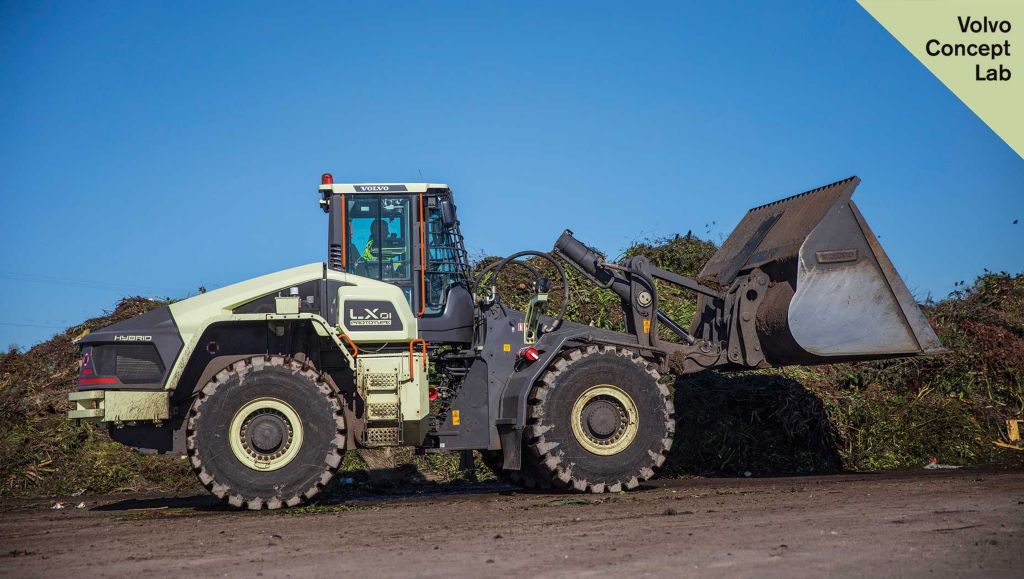LX1 delivers around 50% fuel efficiency during testing


Volvo Construction Equipment (Volvo CE) presented field test results for its LX1 prototype electric hybrid wheel loader at a press event in California, US, on July 12th. The company organized the event alongside its customer Waste Management, which carried out the field tests, CALSTART, which conducted emission tests on the machine, and the California Energy Commission, which helped fund the LX1 project. Since the end of last year, the LX1 has performed hundreds of hours of real work in two applications at Waste Management facilities in California.
Testing began at the Redwood Landfill and Recycling Center, a green waste composting site in the northern part of the state. Both fuel efficiency and greenhouse gas emission tests were conducted at the facility and, although the data is still being analyzed, the results so far show an average improvement of 50% in fuel efficiency, equating to a reduction of 35% in fuel consumption and greenhouse gas emissions. The second test site was the Moreno Valley Transfer Station, a waste transfer site in southern California. Here, the LX1 achieved an average fuel efficiency improvement of around 45%. Both sets of results exceed the 35% fuel efficiency improvement target set for the project.
“We are pleased with the results from the field testing,” says Scott Young, electromobility director at Volvo CE. “Although we’d already seen the LX1 reach up to a 50% improvement in fuel efficiency in our internal tests, every application and operator are different. Because of this, we were aiming for a 35% improvement in fuel efficiency in this project. But we are happy to say that we’ve significantly exceeded this figure and achieved similar results to those recorded at our test site in Sweden.”
Waste Management is the largest environmental services and recycling company in North America, it operates one of the largest fleets of Volvo CE equipment in the world. Prior to testing the LX1, the company ran a conventional machine at both sites to gather baseline data. “Three experienced operators from Waste Management, who were trained and supported by Volvo CE engineers, carried out their daily work with the LX1 and provided us with valuable feedback,” says Young. “Their responses were positive, they liked the dramatic reduction in noise, improved visibility over the rear of the machine, ease of operation and powerful hydraulics. But they also gave us constructive feedback on areas we can refine, such as improving functions like traction control and gear shifting, actions that will enhance operability. Now we’ve concluded the field tests, the machine will be shipped back to Sweden for updates and tuning based on what we’ve learnt over the last six months. At this stage, the LX1 is still part of a development project and it is not commercially available.”
For more information, visit LX1 California Press Event